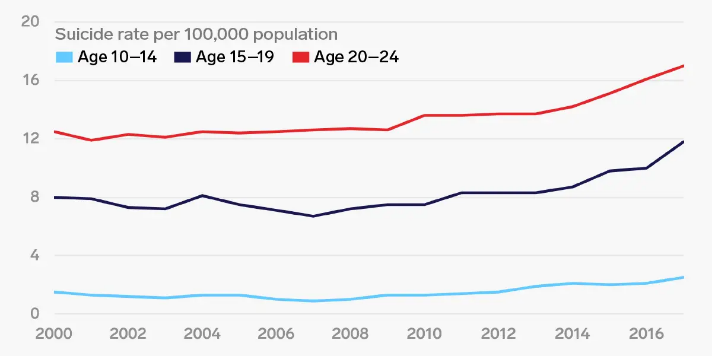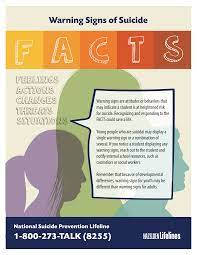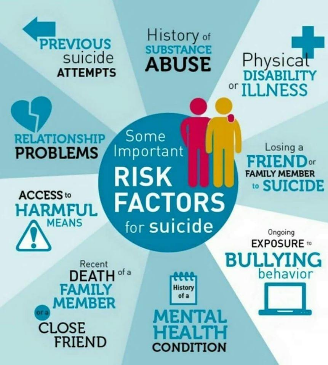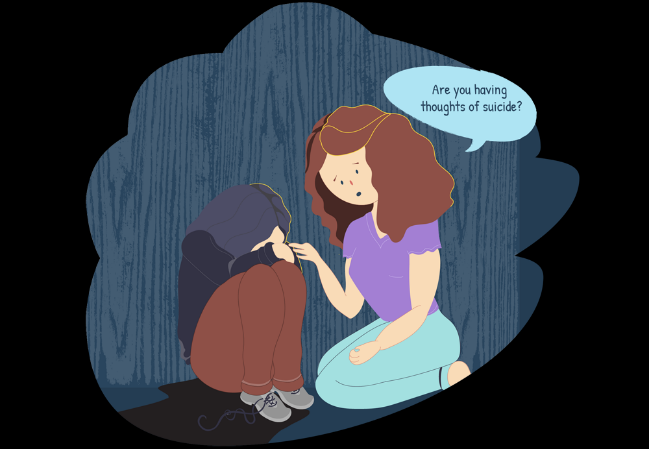Introduction
Adolescent suicide and the increasing level of child suicide are painful topics that pose a number of problems and questions for parents and society:
- What prompts adolescents to take this step?
- Is it possible to discern dangerous signs in the behavior of the child in time and take some measures?
- What should not be done in any case and where to go if the situation has reached a critical point?
Based on the opinions of experts, it is possible to list the most important facts about teen suicide prevention that any adult needs to know (McCance-Katz, 2018).
These facts will help to understand the following:
- why it is necessary to talk openly with children about suicide and suicidal thoughts;
- what are the risk factors for adolescent suicide; what are the visible signs of suicidal mood;
- how not to miss disturbing signals and not to mistake the signs of suicidal behavior for ordinary mood swings;
- why it is important to maintain a constant dialogue with the child, not attributing his or her problems to the peculiarities of age.
With teenage suicide rates on the rise, it is more important than ever to know certain facts, be aware of alarms, and have the tools not only to intervene when needed, but also to regularly discuss mental health issues with children.
Current Statistics
According to an October 2019 report from the U.S. Centers for Disease Control and Prevention (CDC), suicide rates among children, adolescents, and young people increased 56% between 2007 and 2017 (Curtin & Heron, 2019). People between the ages of 10 and 24 die by suicide at a rate of 10.6 deaths per 100,000 people, up from 6.8 deaths per 100,000 people in 2007 (Curtin & Heron, 2019). When looking at a certain age level, for example, children between 15 and 19, among whom suicide increased by 76% between 2007 and 2017, the situation becomes terrifying (Curtin & Heron, 2019). In 2017, suicide was the second leading cause of death among people in this age group.

Warning Signs of Suicide
The Society for the Prevention of Teenage Suicide (SPTS) argues that an easy way to remember the warning signs of suicide is the acronym FACTS, which stands for:
- Feelings, such as a sense of hopelessness about the future and depression.
- Actions, such as hysterics and demonstration of aggression.
- Changes, such as being withdrawn from friends, sleeping or eating more or less than usual, or restless behavior that is not the norm.
- Threats, such as talking, recording, or planning suicide.
- Situations, such as experiencing loss, changes in life circumstances, family problems, breakups, stressful situations at school, or other significant events that can trigger suicidal tendencies.

There are many similarities between signs of suicide risk and symptoms of a psychiatric personality disorder such as major depressive disorder (Singer et al., 2019). Not everyone at risk of suicide has a depressive disorder, and vice versa.
There are still many questions about suicide and the risks of suicide that the experts have no answers to, but despite this, the signs listed above are a big problem that should be paid attention to (McCance-Katz, 2018). Even if a depressed teenager does not have suicidal tendencies, he or she still needs help.
Be aware of the risk factors

While awareness of alarm signals is critical, there is no guarantee that they are accurate and reliable indicators of how a teenager is feeling (Singer et al., 2019). The difficulty lies in the fact that many people silently suffer.
The U.S. Centers for Disease Control and Prevention (CDC) identifies several risk factors to keep in mind:
- cases of suicide in the family;
- cases of abuse in the family;
- at least one suicide attempt in the past;
- cases of mental illness, especially clinical depression;
- cases of alcohol or drug abuse;
- bullying;
- local bursts of suicide;
- serious somatic diseases;
- difficulty getting support and mental health treatment;
- easy access to the means of suicide.
It is also known that young people in the LGBTQ community are at a higher risk of suicide than their heterosexual peers (McCance-Katz, 2018). Researchers have also advanced theories about the relationship between perfectionism and suicide risk.
Recommendations to parents

- Maintain a constant dialogue with a teenager. Parents fear that if they ask about suicide, they will push the child to commit it, but this is a delusion. They risk nothing when they ask their child if he or she is thinking about it (Singer et al., 2019). The child may deny it, this aspect can be a frightening or emotionally difficult topic to discuss, but it is better to be safe than sorry.
- Spend time together. If parents have had problems interacting with their child, they may need to set a schedule to catch up (Singer et al., 2019). They can use entertainment such as eating pizza together or playing games. Not only will this help to maintain regular dialogue, but knowing that they regularly spend time together may make it easier for the child to voice difficult topics.
- Listen more than talk. Parents tend to go over to mentoring admonitions or encouragements when their child shares something painful (Poland et al., 2019). Sometimes it is more important to listen, not to interrupt, show acceptance, and support.
- Ask other people for help. If the parents feel that something is wrong, but their child does not want to talk about it, they need to contact the significant adults in the teenager’s life (teachers, coaches) and ask them to observe.
- Joint problem solving. Suicidal behavior occurs when a teenager feels that he or she has a problem, but does not have the experience or support to solve it (Poland et al., 2019). The task of parents is to share opportunities for improving the situation and support their child.
- Search for professional help. For someone who has suicidal behavior, therapy or medication may be important, but it is the parent’s job to ensure that the teenager does not feel pushed to do so (Poland et al., 2019). It is important to jointly discuss existing solutions and talk about them during the conversation.
- Secure the home. Since an easy access to deadly drugs is in itself a risk factor, the home should always be a safe place, and not just in case of emergencies.
Conclusion
If the ideal world existed, then no parent would have thought that it is necessary to monitor the child for the warning signs of suicidal behavior. However, the reality is that they need to talk openly about suicide and suicidal thoughts to reduce stigma and ensure safety for children, adolescents and young people. This is especially important when it comes to adolescents, as many parents mistake the warning signs of suicidal behavior for ordinary mood swings.
All teenagers face stressful situations or occasionally get depressed or angry. They experience sadness, stress, anger or any other type of unpleasant mood. However, sometimes these emotions can signal more serious problems. In this regard, it is important to pay attention to these signs.
References
Curtin, S., & Heron, M. (2019). Death rates due to suicide and homicide among persons aged 10-24: United States, 2000-2017. NCHS Data Brief, No. 352. Web.
McCance-Katz, E. F. (2018). The substance abuse and mental health services administration (SAMHSA): New directions. Psychiatric Services, 69(10), 1046-1048.
Poland, S., Lieberman, R., & Niznik, M. (2019). Suicide contagion and clusters-part 1: What school psychologists should know. Communique, 47(5), 21-23.
Singer, J. B., Erbacher, T. A., & Rosen, P. (2019). School-based suicide prevention: A framework for evidence-based practice. School Mental Health, 11(1), 54-71.